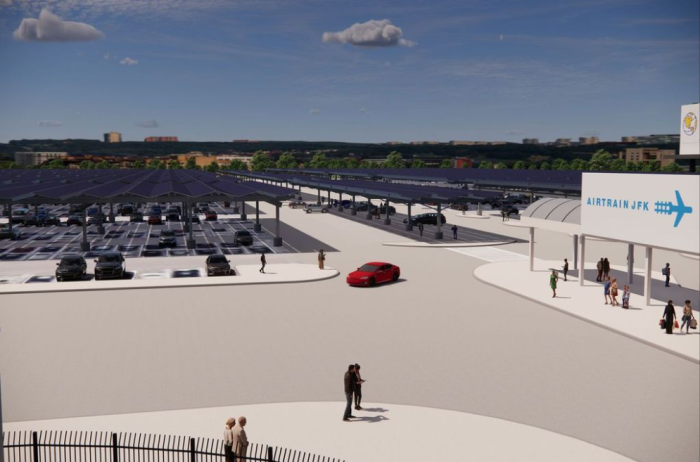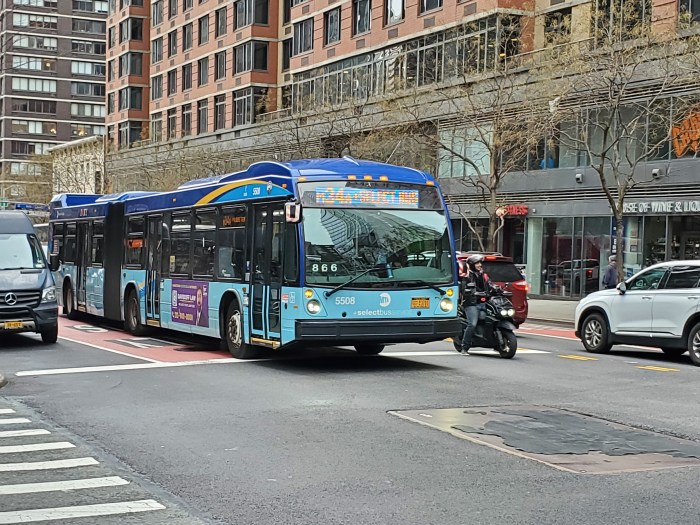
Away from the manic platforms and crazed commuters, out of view of the shoulder-to-shoulder train cars and sweaty seats, sit 12 train dispatchers in a peaceful, dimly lit control center.
These dispatchers are the shot-callers for Penn Station’s “summer of hell.”
A giant board in Amtrak’s Penn Station Central Control, known as the “ops center,” displays trains moving in real time over about 192 miles of track spanning from the Philadelphia to New York City areas. It’s one of three similar control centers in Amtrak’s Northeast Corridor, along with locations in Boston and Wilmington, Delaware.
“What you’re witnessing today is a normal day — knock wood on that,” said Steven Young, Amtrak’s deputy general manager of its New York division, during a media tour of the center on Tuesday. “If everything’s on time, it’s the easiest job in the world; you just pull and go.
“Where these guys get paid the money for is when (trains) are late and they have to sort them out,” said Young, a 35-year veteran at Amtrak, which owns Penn Station, and a former train dispatcher.
Young likened the work to a chess match, played out on the board’s thin, color-coded lines. Green lines signify the route being displayed for a train. Red lines are the actual location of a train, accompanied by a small yellow box identifying the specific train.
All the way to the right side of the board is what’s known as “A Interlocking,” the aging complex of switches just west of the Penn Station’s 21 platforms. This is the nexus for moving trains into and out of Penn, as well as the site of Amtrak’s summer repairs. There, three blue lines represent the tracks taken out of service: numbers 10, 12 and 13, the three in most need of rehabilitation, according to Amtrak.
That interlocking area was the scene of the two derailments that occurred within two weeks this spring, spurring the accelerated repair plan. Just before construction began on July 10, a third train derailed in the Hudson River tunnel just outside Penn Station.
Gov. Andrew Cuomo, who billed Amtrak’s repair plans the “summer of hell,” has since called for the Port Authority or the private sector to take over ownership of Penn, which he claims Amtrak has allowed to fall into its current decaying state.
“This is 50 years of lack of maintenance and repair coming home to roost,” he said this May.
Amtrak, though, has attributed the degradation of the station to decades of increasing use and underfunding, delaying this summer’s needed work.
The busiest train terminal in the nation, Penn serves about 600,000 daily commuters of Amtrak, Long Island Rail Road and New Jersey Transit, moving roughly 1,300 trains each day. The summer repairs have limited that number of trains to about 1,142 per day, with 90 percent of those service reductions coming in peak hours.
The plans have forced all three transit agencies to scale back service at Penn, with the LIRR providing what it describes as costly alternatives like ferry and charter bus service. But the outages allow Amtrak to complete what would otherwise be two years of construction in three months, according to Young. And the transit agency is currently on pace to complete its work by the Sept. 1 deadline.
“All 21 tracks were needed to run peak service. We’ve just taken three of them out,” Young said. “It’s just simple math. We can’t run the number of trains we normally run.
“It’s kind of like, I used to say, ‘When you have four lanes on a highway and you put cones out on two but the same amount of cars come, next thing you know, you’re all stopped,’ ” he continued. “The same thing would happen here.”

















